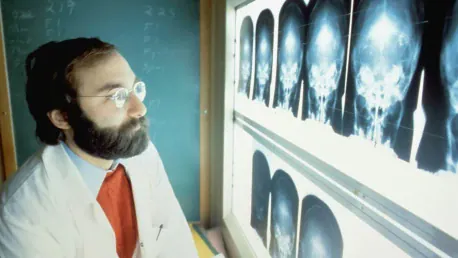The radiology industry stands at a pivotal moment as it marches toward 2025, facing numerous challenges and opportunities that will shape its future trajectory. One significant issue radiology is grappling with is the increasing burnout among radiologists due to intensive working hours. Radiologists are under immense pressure, which has resulted in widespread fatigue and decreased job satisfaction. This growing concern highlights the need for systemic changes within the industry to ensure that professionals can maintain a healthy work-life balance. Another pressing challenge that radiology faces is the financial strain due to ongoing Medicare cuts. Efforts to advocate for reduced cuts have been met with cautious hope, especially amidst the political shifts in the United States. These cuts have forced radiology practices to reassess their financial strategies to remain viable.
Medicare Reimbursements and Burnout
Medicare reimbursements have long been a contentious issue for radiology practices, with continual cuts significantly affecting revenue streams. In recent years, advocates have pushed for mitigating these cuts to provide some financial respite for the industry. However, the success of these efforts has been uncertain, given the political landscape. The financial pressure resulting from Medicare reductions has forced practices to find innovative ways to manage their budgets without compromising patient care. This can involve reassessing operational expenses and exploring alternate revenue streams to stay afloat.
The burden placed on radiologists due to excessive working hours cannot be ignored, as it directly impacts their mental health and overall job satisfaction. The radiology sector has seen a surge in burnout cases, resulting from long shifts and extensive workloads. Addressing burnout involves finding a balance that allows radiologists to perform their duties efficiently while maintaining their well-being. Efforts to advocate for reduced working hours and improved working conditions are essential in creating a sustainable environment for professionals. Ensuring that radiologists can maintain a healthy work-life balance is critical for the industry’s sustainability and the quality of patient care.
Recruitment Challenges and Retention
Recruitment remains one of the most pressing concerns for radiology as the industry grapples with a growing shortage of radiologists. The shortage has become increasingly alarming, exacerbated by the rising demand for radiology services. This has led to a considerable increase in recruiter activity, particularly noticeable at the Radiological Society of North America (RSNA) meetings. Rural radiology practices are among the hardest hit, struggling the most to fill long-term vacancies. These practices often face an uphill battle in attracting qualified candidates, leading to intensified competition among recruiters.
Despite high demand and competitive offers, the gap left by retiring radiologists remains a significant challenge. The number of new graduates entering the field is unable to keep up with the rate of retirements, leaving many positions unfilled. This shortage has created a highly competitive job market, intensifying the need for radiology practices to offer attractive incentives to lure potential candidates. Addressing this issue involves developing comprehensive recruitment strategies that can attract and retain top talent. Providing a supportive work environment, ongoing professional development, and competitive compensation packages are crucial in ensuring that recruitment efforts are successful.
Integrating Artificial Intelligence
Artificial Intelligence (AI) technologies present both opportunities and challenges for the radiology sector. The proliferation of AI vendors at industry events like the RSNA conferences signifies growing interest in these technologies’ potential. AI-based solutions, such as coronary plaque assessment tools that come with reimbursable codes, indicate a shift towards more efficient diagnostic processes. However, the effective integration of AI into radiology practices is not without obstacles. The costs associated with implementing these technologies can be substantial, and necessary training and seamless workflow integration remain significant hurdles.
Radiology practices must evaluate AI technologies critically to ensure they contribute tangible value rather than being mere marketing gimmicks. Integration efforts should focus on how AI can enhance efficiency, improve diagnostic accuracy, and reduce radiologist workload. Successful implementation of AI requires thorough training for radiologists and support staff to effectively use these tools. Moreover, ensuring that AI solutions can be smoothly incorporated into existing workflows is vital to prevent disruptions. Ultimately, the goal is to leverage AI to complement human expertise in radiology, enhancing overall service delivery and patient outcomes.
Looking Ahead: Strategies and Solutions
As the industry faces a critical shortage of radiologists, recruitment is a significant concern for radiology. This problem is becoming more acute due to the rising demand for radiology services, resulting in heightened recruiter activity, especially visible at Radiological Society of North America (RSNA) meetings. Rural radiology practices are particularly affected, struggling to fill long-term vacancies and facing intense competition for qualified candidates.
The challenge is exacerbated by the gap left by retiring radiologists, with new graduates unable to meet the replacement demand. This shortage creates a fiercely competitive job market, necessitating radiology practices to provide attractive incentives to attract potential candidates. Effective recruitment strategies are crucial to address this issue and include developing a supportive work environment, offering ongoing professional development opportunities, and providing competitive compensation packages. These elements are vital to ensure that recruitment efforts are successful and that top talent is both attracted and retained in the field.









